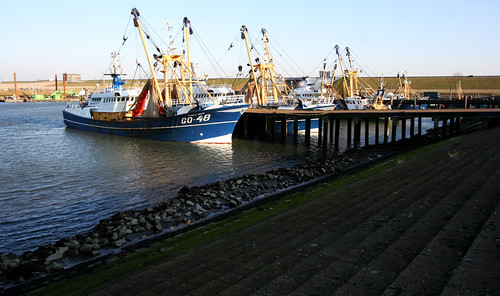350 million metric tons of plastic are produced globally every year. To put this into perspective, here’s a brief list of things that weigh ONE ton: a walrus, the Liberty Bell, a baby humpback whale, a giraffe, a great white shark, etc.
Now imagine you have a herd of 79,000 walruses.

Combined, these two walruses equate 0.0025% of the total weight of plastic in the Great Pacific Garbage Patch. Picture courtesy of Creative Commons.
That is the low estimate of how much plastic has accumulated in the Great Pacific Garbage Patch (GPCP), 1.6 million square kilometers between California and Hawaii. And this is only one part of the ocean! As of 2015, plastic fishing gear such as nets, ropes, and lines, encompasses 52% of the GPCP’s mass. On top of this, waste fishing materials are also the primary cause of “ghost fishing,” the unintended trapping of marine wildlife.
“… estimated 4 to 12 million metric tons of plastic lost annually to marine environments.”
In order to combat this calamity, a team of chemists funded by the National Science Foundation published their work in early 2020 depicting a polymer that breaks down over time. The polymer, isotactic polypropylene oxide or iPPO has been shown to degrade when exposed to ultraviolet (UV) radiation, the same type of radiation emitted from the sun. Over a span of 30 days of constant UV exposure, iPPO’s chain lengths reduced to a quarter of their original size; this means the material will react with its surroundings and thus break down faster than the standard polymers used in fishing equipment.
The ability of iPPO to break down relatively quickly is huge, but in order for it to replace traditional plastics in the fishing industry, it must also be physically sturdy. Fortunately, with a few small tweaks referred to as “robust string hardening,” iPPO’s strength is able to match that of the most popular plastic used in fishing: nylon-6,6. With this in mind, the research team is hopeful that iPPO will replace nylon-6,6 in the near future.

Fishing boats. Picture courtesy of Creative Commons.
Of course, this isn’t the end of their research. A plastic that is able to break down faster than others is a huge step forward, but it’s not the end-all-be-all. The team’s ultimate goal is to leave no trace of polymers in the environment, and they are already making adjustments to iPPO in hopes that it may eventually disappear altogether.
Bryce M. Lipinski, Lilliana S. Morris, Meredith N. Silberstein, Geoffrey W. Coates. Isotactic Poly(propylene oxide): A Photodegradable Polymer with Strain Hardening Properties. Journal of the American Chemical Society, 2020; 142 (14): 6800 DOI: 10.1021/jacs.0c01768

Alex
"This title was very eye catching! That is so interesting that such a ..."
Alex
"This is really interesting! The fact that crops and plants are damaged is ..."
Alex
"Well done, this article is great and the information is very captivating! Ethics ..."
Alex
"I was intrigued throughout the whole article! This is such an interesting topic, ..."
Alex
"This is such an interesting article, and very relevant!! Great job at explaining ..."
Grandpa
"Honey You Did a good job I will forward to my eye doctor "
murphymv
"This article is fascinating because it delves into the details of the research ..."
murphymv
"I agree, adding the photo helped solidify the main finding. "
murphymv
"This is a fascinating finding. I hope this innovative approach to improving transplants ..."
Sherzilla
"This is a great article! I would really love to hear how exactly ..."
Sherzilla
"It's disappointment that these treatments were not very effective but hopefully other researchers ..."
Sherzilla
"I agree with your idea that we need to shift our focus to ..."
Sherzilla
"It's amazing to see how such an everyday household product such as ..."
Lauren Kageler
"I will be interested to see what the data looks like from the ..."
Lauren Kageler
"A very interesting article that emphasizes one of the many benefits that the ..."
maricha
"Great post! I had known about the plight of Little Browns, but I ..."
Sherzilla
"I assumed cancer patients were more at risk to the virus but I ..."
Sherzilla
"Great article! It sheds light on a topic that everyone is curious about. ..."
maricha
"This article is full of really important and relevant information! I really liked ..."
maricha
"Definitely a very newsworthy article! Nice job explaining the structure of the virus ..."
maricha
"It's interesting to think that humans aren't only species dealing with the global ..."
murphymv
"This is very interesting and well explained. I am not too familiar with ..."
Lauren Kageler
"Great article! This post is sure to be a useful resource for any ..."
Lauren Kageler
"Definitely seems like an odd pairing at first, but any step forward in ..."
murphymv
"What an interesting article! As you say, height and dementia seem unrelated at ..."
murphymv
"Great article! I learned several new methods of wildlife tracking. This seems like ..."
murphymv
"Very interesting topic! You explained cascade testing and its importance very well. I ..."
Alex
"This article is really interesting! What got me hooked right away was the ..."
Sabrina
"I found this article super interesting! It’s crazy how everyday products can cause ..."
Erin Heeschen
"I love the layout of this article; it's very eyecatching! The advancements of prosthetics ..."
murphymv
"Awesome article! I like the personality in the writing. Flash Graphene not only ..."
murphymv
"Very interesting work! I don't know a whole lot about genetics, but this ..."
Cami Meckley
"I think the idea of using virtual reality technology to better help prepare ..."
Erin Heeschen
"I wonder if there's a connection between tourist season and wildfires in the ..."
Ralph berezan
"Not bad Good work "
Michelle
"This sounds like it would be a great tool for medical students! ..."